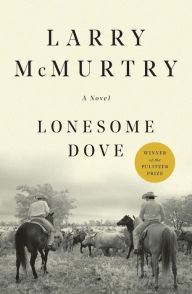From the Publisher
"[Chevalier] creates a world reminiscent of a Vermeer interior: suspended in a particular moment, it transcends its time and place."
—The New Yorker"Marvelously evocative."
—The New York Times
"Chevalier brings the real artist Vermeer and a fictional muse to life in a jewel of a novel."
—Time
"A vibrant, sumptuous novel... triumphant... a beautifully written tale thatmirrors the elegance of the painting that inspired it."
—The Wall Street Journal
"Chevalier has so vividly imagined the life of the painter and his subject."
—Milwaukee Journal Sentinel
"Lustrous."
—Entertainment Weekly
Forbes
WE GO TO WAROur response to the Sept. 11 horror is exactly right. The only opposition seems to be coming from academic left-wingers who fancy themselves fashionable in their constant and now-frantic efforts to blame America, even for Sept. 11.
Had we failed to launch the continual, strong attacks that we have, we would have told terrorists around the world that it is safe to attack America with impunity. The road we have chosen is the right one. It will be long, and not without risk. If the patience and strength of our country matches those of our leadership, we will win.
THE BOOKS OF SUMMER IX
This annual review of books read during the summer in Maine is appearing now because far more important events intervened. These books, however, are worth reading anytime.
John Adams (Simon & Schuster, $35) is David McCullough's magisterial and altogether wonderful bi-ography. Joseph Ellis' 1993 biography of Adams began the process of demonstrating how much we owe to this most extraordinary of our founding fathers. McCullough completes the rescue of our second President from the comparative obscurity to which the far better known lives of George Washington, Thomas Jefferson and Benjamin Franklin had seemingly condemned him.
Adams, a Massachusetts farmer and lawyer, was a proud descendant of the Puritans and outdid some of them in his rigid rectitude. He had a towering intellect, refined and toned by his Harvard education. He scorned those of lesser intellect and some who simply disagreed with his firmly held opinions. Anyone subjected to his disdain was not likely to forget it.
Adams worked endlessly for causes he believed in, especially personal liberty and freedom fromoppression. He was unwilling to compromise in the least on anything remotely resembling a matter of principle. But these character-istics enabled him and his sometimes irritated colleagues (no mean intellects themselves) to work together to produce our democracy. We probably would never have taken the extreme step of severing relations with Great Britain without Adams' relentless pursuit of what he saw as necessary to secure our freedom and our future.
Some of the finest chapters are those involving Adams' responsibilities representing the Colonies' interests in France, which led to France's committing troops to our Revolution. In all this Adams was far more than aided by his extraordinary wife, Abigail. Almost a dual biography, this book includes perhaps the first full appreciation of how much Abigail contributed to the Revolution and our nation's birth.
The summer was also enlivened by a controversial little book, The Jefferson-Hemings Myth: An American Travesty (Thomas Jefferson Heritage Society, $11.95). Ten contributors, including editor Eyler Robert Coates Sr. and Bahman Batmanghelidj, offer virtually irrefutable proof that Jefferson did not father a child by Sally Hemings, a myth that many have come to accept.
Three novels, brilliantly written, with fascinating narratives, completed this summer's fare. Readers may recall my unbounded admiration for James Webb, one of our finest war novelists since Stephen Crane. It is a pleasure to re-port that Webb's Lost Soldiers (Bantam Books, $25) is fully up to his high standards--taut with skillfully nar-rated realism. It is a tale of the search for two American traitors who caused the death of Marines in a remote outpost in Vietnam. No one else has ever conveyed better the dangers, risks and horrors of our war in Vietnam. Once again we see and live through the misery, terror and hardship of infantry fighting in that strange land--a land that Webb has clearly come to love.
Death in Holy Orders, by P.D. James (Knopf, $25), is the latest of the Adam Dalgliesh mysteries. An ordinand's death at a small theological college leads into a tale of multiple murders and horribly sacrilegious acts, along with the familiar descriptions and character studies that distinguish all of Baroness James' works. This is a most reward-ing and skillfully constructedexample of the classic mystery as told by a master of the art.
One of the nicest short books I've read in a long time is Girl With a Pearl Earring, by Tracy Chevalier (Plume, $12). This is the tale of painter Johannes Vermeer and his tumultuous household in 1660s Holland. But it is also the story of his 16-year-old housemaid and model, Griet, who sat for the glorious portrait "Girl With a Pearl Ear-ring." This is a most delightful lesson in art history, as well as a study in vivid contrasts between Vermeer's life and that of his most famous model.
—Caspar Weinberger



















